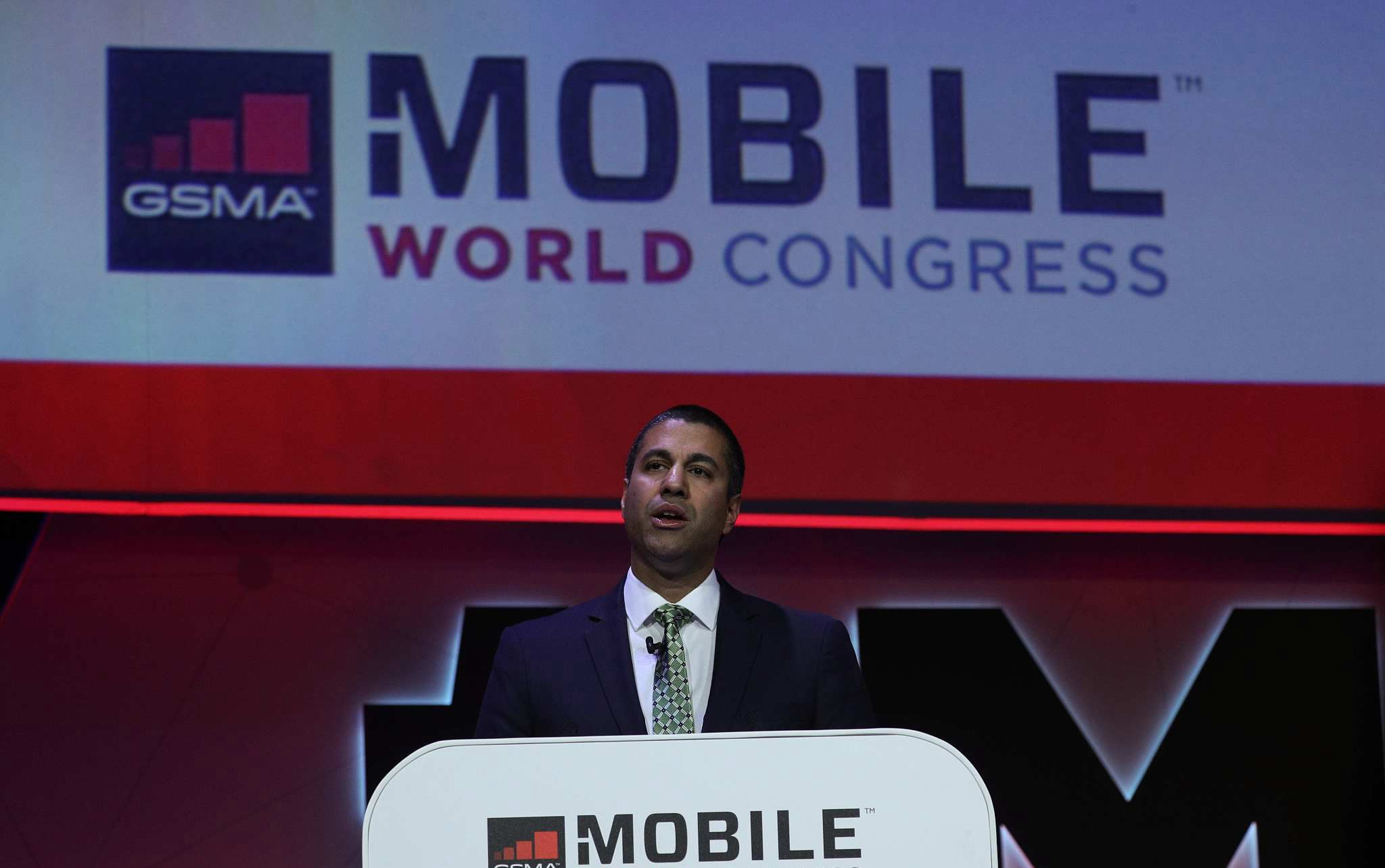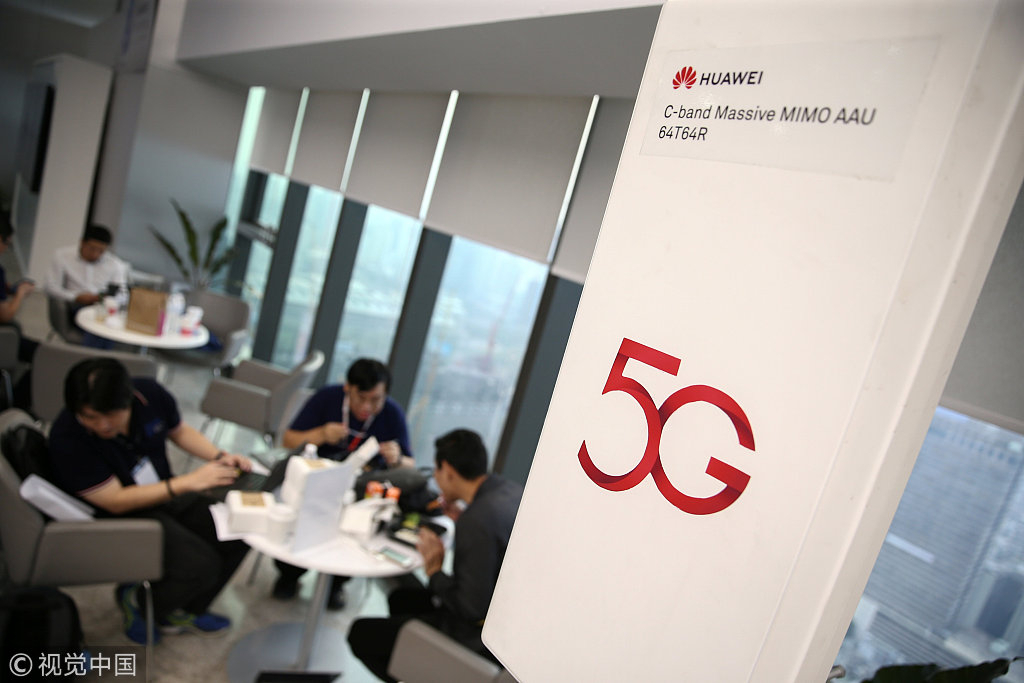
Analysis
07:59, 14-Apr-2019
China and U.S. in global 5G race
Updated
11:16, 14-Apr-2019
Xu Sicong

5G has been in the vanguard of the latest technological development. It is widely believed that the country that has secured dominance over this cutting-edge technology will be leading the global economic tide in the future.
The sentiment is echoed by U.S. President Donald Trump who vowed on Friday that securing 5G network was a battle the U.S. must win and that it was “a link vital to the U.S. prosperity and national security in the 21st century.”
As Trump announced a slew of measures relating to how to speed up the country's 5G development, America looked poised to raise the game significantly. For example, it was unveiled that its wireless industry will see an injection of 275 billion dollars more investment in 5G network and the country will "free up as much wireless spectrum," open up more 5G markets nationwide and streamline the permitting process.
The traditional 4G network has dramatically facilitated communication between people, but the emerging 5G era would enable an even faster system that will make the Internet of Things, AI and VR a reality as they require faster data transmissions that are only made possible by the deployment of 5G.
According to Andy Mok, a non-resident fellow at the Center for China and Globalization, there are several requirements for putting a 5G network in place, such as access to high-frequency spectrum and acquiring networking equipment.

U.S. Federal Communications Commission Chairman Ajit Pai delivers a keynote speech at the Mobile World Congress in Barcelona, Spain, February 26, 2018. /VCG Photo
U.S. Federal Communications Commission Chairman Ajit Pai delivers a keynote speech at the Mobile World Congress in Barcelona, Spain, February 26, 2018. /VCG Photo
Wireless communications signals transmit via radio frequency, also known as spectrum. 5G is a wireless network, and it requires high-frequency spectrum, such as the millimeter wave spectrum that sits between 30 gigahertz (GHz) and 300 GHz. When developing the 5G network, high-frequency spectrum that is not entirely available at the moment needs to be opened for use.
In the U.S., the Federal Communications Commission (FCC) has the authority to auction spectrum licenses to wireless providers. According to Mok, the licensing process in the U.S. can be highly politicized and the costs are driven high. Moreover, it is also reported that even though the commission tried to free up additional spectrum in the past, the process was slow which clearly affected the growth of the industry.
In China, the situation is a bit different. Meng Haihua, an associate researcher at the Shanghai Institute of Science said, China also has to open up more high-frequency spectrum for 5G deployment. But different to the U.S., Mok suggests due to China's much faster decision-making process, the government is more likely to enable quicker action if such decisions are made.
Such a scenerio seems very likely since the country has put 5G at the forefront of its technology development strategy. For example, as early as 2016, 5G was seen as a “strategic emerging industry” in the country, which was written into its 13th Five-Year Plan and made one of the priority areas for development.
In terms of network equipment, which includes base stations that receive and send data, China is also leading the race. Right now, China's equipment provider Huawei, together with Europe's Ericsson and Nokia, is one of the three network equipment providers for the 5G network. Even though the U.S. has politicized Huawei's global presence and attempted to thwart its momentum to gain a dominant footing in the global market, due to the company's high-quality and cheap equipment, it has managed to retain front-runner position so far. Even some of the U.S. allies have refused to issue an outright ban on the company.

A Huawei 5G device on display at an exhibition in Bangkok, Thailand, January 30, 2019. /VCG Photo
A Huawei 5G device on display at an exhibition in Bangkok, Thailand, January 30, 2019. /VCG Photo
In comparison, the U.S. does not have such equipment companies of its own, which is a prominent disadvantage. Moreover, as experts point out, even though the federal government tries to push its 5G strategy through nationwide, given the potential obstacles that may be encountered by local governments and companies alike, the actual implementation of the strategy is likely to be slow.
Nevertheless, China does also face certain technical complexities in the area, such as millimeter wave equipment, beamforming, and massive MIMO, so on and so forth, according to experts.
And among these, Meng said that the country's lack of self-developed 5G chips is the front and center. Last April, the U.S. banned its components makers from selling to ZTE, thrusting the company into paralysis. Even though the ban was relaxed later, efforts to halt Chinese companies' commercial advance did not stop there. Earlier this year, U.S. lawmakers still sought to ban the sale of U.S. chips or other components to Chinese telecommunications companies including Huawei and ZTE.
Situations like these highlighted the dire situation Chinese telecommunication companies are in as they are highly dependent on foreign chips. Nevertheless, the potential threat coming from the U.S. has strengthened China's determination to develop its own technology.
In summary, 5G network is seen by many as the springboard to technology dominance in the fourth industrial revolution. As China-U.S. economic rivalry intensifies, the battle over 5G will most certainly continue to heat up.
(If you want to contribute and have specific expertise, please contact us at opinion@cgtn.com)

SITEMAP
Copyright © 2018 CGTN. Beijing ICP prepared NO.16065310-3
Copyright © 2018 CGTN. Beijing ICP prepared NO.16065310-3